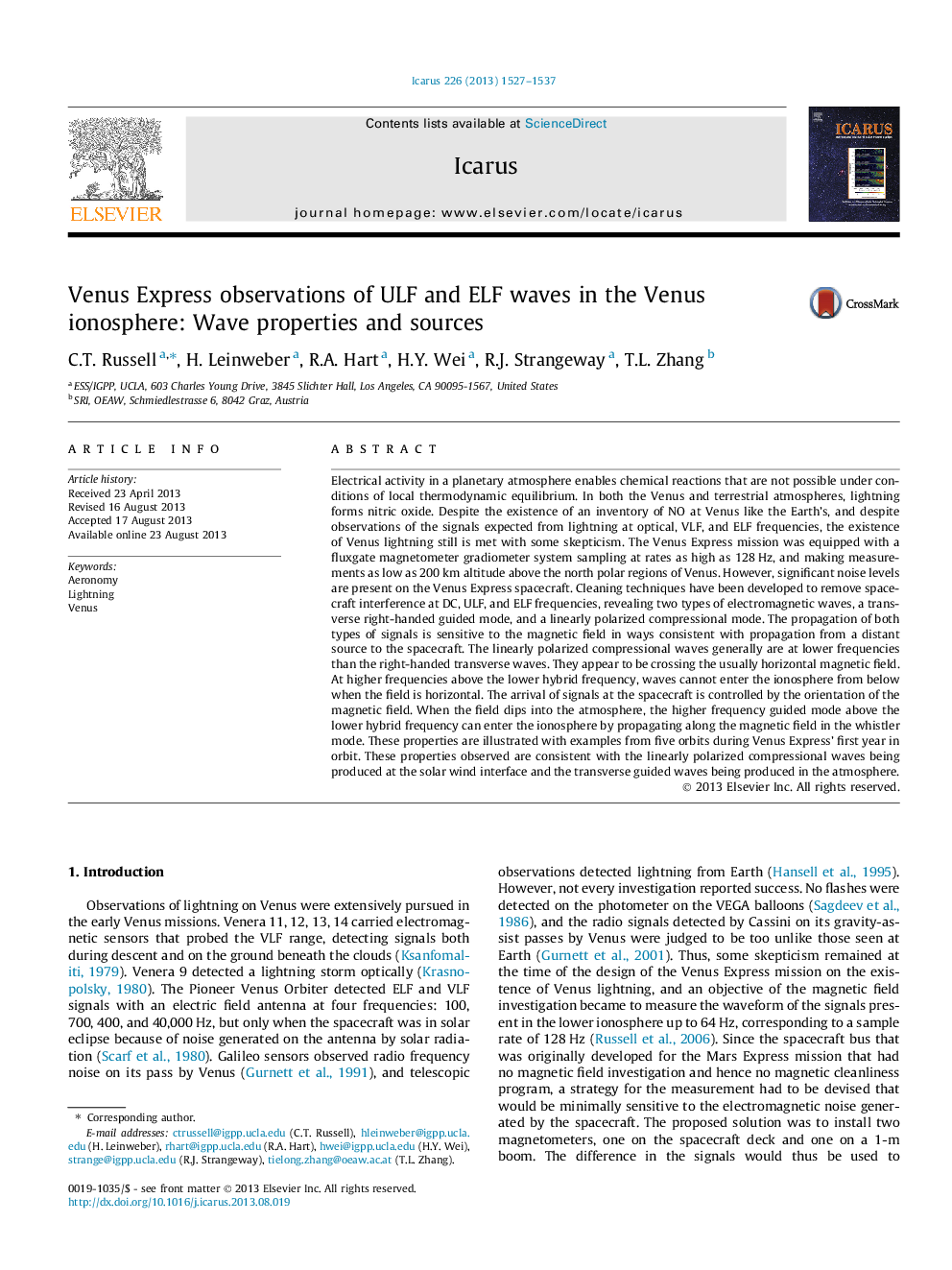| Article ID | Journal | Published Year | Pages | File Type |
|---|---|---|---|---|
| 10701397 | Icarus | 2013 | 11 Pages |
Abstract
Electrical activity in a planetary atmosphere enables chemical reactions that are not possible under conditions of local thermodynamic equilibrium. In both the Venus and terrestrial atmospheres, lightning forms nitric oxide. Despite the existence of an inventory of NO at Venus like the Earth's, and despite observations of the signals expected from lightning at optical, VLF, and ELF frequencies, the existence of Venus lightning still is met with some skepticism. The Venus Express mission was equipped with a fluxgate magnetometer gradiometer system sampling at rates as high as 128Â Hz, and making measurements as low as 200Â km altitude above the north polar regions of Venus. However, significant noise levels are present on the Venus Express spacecraft. Cleaning techniques have been developed to remove spacecraft interference at DC, ULF, and ELF frequencies, revealing two types of electromagnetic waves, a transverse right-handed guided mode, and a linearly polarized compressional mode. The propagation of both types of signals is sensitive to the magnetic field in ways consistent with propagation from a distant source to the spacecraft. The linearly polarized compressional waves generally are at lower frequencies than the right-handed transverse waves. They appear to be crossing the usually horizontal magnetic field. At higher frequencies above the lower hybrid frequency, waves cannot enter the ionosphere from below when the field is horizontal. The arrival of signals at the spacecraft is controlled by the orientation of the magnetic field. When the field dips into the atmosphere, the higher frequency guided mode above the lower hybrid frequency can enter the ionosphere by propagating along the magnetic field in the whistler mode. These properties are illustrated with examples from five orbits during Venus Express' first year in orbit. These properties observed are consistent with the linearly polarized compressional waves being produced at the solar wind interface and the transverse guided waves being produced in the atmosphere.
Related Topics
Physical Sciences and Engineering
Earth and Planetary Sciences
Space and Planetary Science
Authors
C.T. Russell, H. Leinweber, R.A. Hart, H.Y. Wei, R.J. Strangeway, T.L. Zhang,
